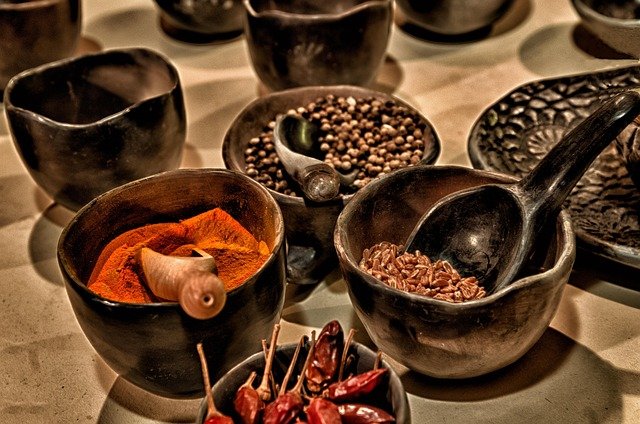Flavor Fusion: Blending Global Cuisines in Your Kitchen
Embark on a culinary adventure that transcends borders and tantalizes taste buds. Discover the art of fusion cooking, where traditional recipes meet unexpected ingredients, creating a symphony of flavors that will revolutionize your home cooking experience. Get ready to explore a world of taste without leaving your kitchen.

Mastering the Art of Fusion
Fusion cooking is more than just throwing together ingredients from different cultures; it’s a delicate balance of flavors, textures, and culinary traditions. To master this art, start by understanding the flavor profiles of various cuisines. For example, Thai cuisine is known for its balance of sweet, sour, salty, and spicy flavors, while Italian cuisine often emphasizes herbs, tomatoes, and cheese. Once you grasp these fundamentals, you can begin to experiment with crossovers. Try adding lemongrass to your tomato sauce for pasta, or incorporate miso into your mashed potatoes for a umami boost. The key is to start small, with one or two fusion elements, and gradually build complexity as you become more comfortable with the process.
Unexpected Pairings That Work
Some of the most exciting fusion dishes come from unexpected pairings that surprisingly complement each other. Take, for instance, the combination of Mexican and Korean cuisines. The spicy, tangy flavors of Korean gochujang paste work wonders in a traditional Mexican salsa, adding depth and complexity. Another successful pairing is the marriage of Indian and Italian cuisines. Imagine a pizza topped with tandoori chicken, cilantro chutney, and paneer cheese – a delightful blend of familiar and exotic flavors. These unexpected combinations not only create delicious meals but also challenge our preconceptions about what certain dishes should taste like, opening up a world of culinary possibilities.
Fusion in Everyday Cooking
Incorporating fusion elements into your everyday cooking doesn’t have to be complicated or time-consuming. Start by introducing fusion flavors into familiar dishes. For example, add a Thai-inspired twist to your morning oatmeal with coconut milk, lemongrass, and a sprinkle of toasted sesame seeds. Or give your classic mac and cheese an Indian makeover with the addition of garam masala and peas. These small changes can transform ordinary meals into exciting culinary adventures. As you become more confident, try creating fusion dishes from scratch, like a Mexican-inspired sushi roll filled with avocado, jalapeño, and cilantro, or a Mediterranean-Asian stir-fry using olive oil, feta cheese, and soy sauce.
The Future of Fusion
As our world becomes increasingly interconnected, the future of fusion cuisine looks brighter than ever. We’re seeing the emergence of “third-culture cooking,” where chefs and home cooks blend their heritage cuisines with the culinary traditions of their adopted homes. This trend is giving rise to entirely new flavor profiles and dishes that defy traditional categorization. Moreover, fusion is extending beyond just flavor combinations. Innovative cooks are experimenting with fusion techniques, applying cooking methods from one culture to ingredients from another. As we move forward, expect to see more boundary-pushing combinations, like Nordic-Moroccan or Peruvian-Japanese fusions, pushing the envelope of what’s possible in the culinary world.
Fusion Cooking Tips & Facts
• Start with familiar dishes and add one fusion element at a time
• Balance flavors: aim for a harmony of sweet, sour, salty, and umami
• Respect the essence of each cuisine while innovating
• Don’t be afraid to experiment – some of the best fusions come from happy accidents
• Use herbs and spices from different cultures to create unique flavor profiles
• Fusion cooking can make unfamiliar ingredients more approachable
• The concept of fusion cuisine dates back to the 1970s but has evolved significantly
• Some of the world’s most popular dishes, like California rolls, are products of fusion
In conclusion, fusion cooking is more than just a trend; it’s a reflection of our globalized world and a celebration of culinary diversity. By blending global cuisines in your kitchen, you’re not just creating exciting new dishes – you’re participating in a cultural exchange that brings the world a little closer together. So, open your spice cabinet, fire up your stove, and let your culinary imagination run wild. The world of flavor fusion is waiting for you to explore.





